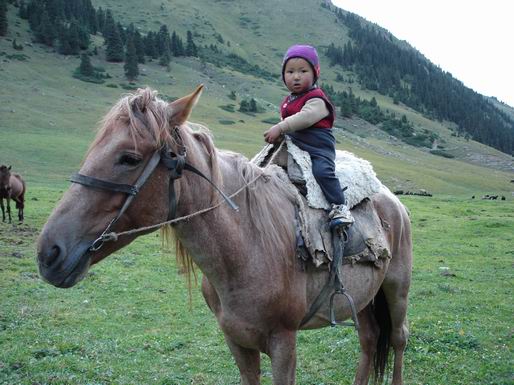Type the name of the breed you're looking for below
[wpdreams_ajaxsearchlite] Don't see the breed your're looking for? Click here and let us know!
Kirgiz horse
| Country Of Origin | Kirgizia |
| History and Background | The Kirgiz horse breed derives its name from its place of origin, Kirgizia – a territory that used to belong to the former Soviet Union. This rare horse is usually used for riding. It is also used for light draft work. Historically, Kirgiz horses were common. There were great numbers of them in Kirgizia. The horses flourished because they were tough. They could take care of themselves since they were highly adapted to the harsh climatic conditions and rugged terrain of Kirgizia. However, certain factors led to the depletion of their numbers. The depletion of the Kirgiz horse breed can be attributed mainly to experimental breeding efforts. Breeders wanted to improve the horse. Specifically they wanted to increase the Kirgiz horse’s size. In line with this, they crossed the Kirgiz with other breeds including the Kazakh and Tadzik horses. These wide-scale breeding experimentation efforts have laid waste to the pure Kirgiz horse breed. There is hope, however, for some of the pure Kirgiz horses do still remain. |
| Use Today | Light Draft Work, Riding |
| Height | 12.3 and 14 hands high (49-56 inches, 125-142 centimeters) |
| Colour | Bay, Gray |
| Characteristics | The Kirgiz has a straight, large head. Nevertheless, the head is well-set and firmly attached to a short and muscular neck. The withers of the Kirgiz are not very prominent. The back is usually straight, the croup is sloped and the trunk shaped rather like a barrel. The legs of the horse are short and stable. The hooves are notably tough and hardy, making the Kirgiz a horse that copes well with traveling shoeless across rough terrain. The Kirgiz horse comes in various colours, predominantly bay and gray. It is also slow to mature; it reaches maturity only after 12 years. |
| Personality and Temperament | The Kirgiz is a hardy mountain horse. Hardened and honed as it is by its natural environment, it can withstand severe weather conditions that could be fatal to other horses. Nevertheless, Kirgiz horses need all the help they can get so their survival will be assured. During the long winter, the horses need lots of body fat to give them warmth and energy. It is therefore ideal to let a Kirgiz horse gain weight during the summer so that it can be adequately prepared to wait out the long winter cold ahead. This should not be too hard, anyway, since the Kirgiz not only has great endurance; it also has modest feeding requirements. |



